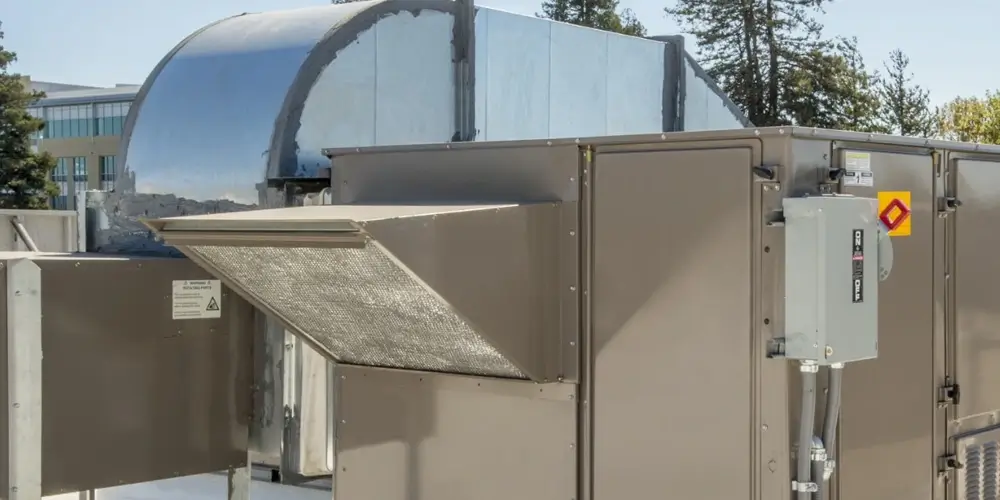Commercial Heating Repair & Service

Repairs to your Workplace Heater
Finding a capable and reliable commercial heating repair company can be a constant challenge. West Coast Chief offers a round-the-clock rapid response professional service.
As a local company, we’ve been serving our valued domestic and commercial customers for over a quarter of a century. Our reputation is for customer care, elevated quality services, and courteous, friendly staff. Our work ethic and attention to detail have earned us this status in the eye of Greater LA residents.
In time, even the most well-designed and well-made heating setups can develop a range of problems. Consequences range from a decrease in their usefulness and money-saving efficiency to no output whatsoever.
No matter what type of centralized system you have installed in your building, when problems arise, you can count on the experts at West Coast Chief. Contact us today to start your journey to a productive heating system.
Types of Commercial Heating Systems
There are several types of commercial central heating systems found in buildings throughout Southern California and the rest of the U.S. Main examples of the systems in use include:
Steam or Water Heated by Oil/Gas
In this type of central heating system, natural gas, propane, or oil burns in a boiler, heating water to the point of vaporization. The pressurized steam vapor then travels through a series of pipes to radiators located in various rooms.
This traditional approach is quite inefficient and only older, non-retrofitted buildings rely on it. This second type of system also uses natural gas, propane, or oil to heat water in a boiler. However, the water never reaches the point of vaporization. The hot water travels through pipes to heat radiators distributed throughout a building.
Commercial Furnaces
Furnaces generate internal heat. A component called a blower distributes the heat through a ducting system. Most commercial buildings equipped with this technology burn natural gas or propane as fuel.
However, some buildings have electricity-powered units that generate heat with a series of linked components known as heating elements.
Some fuel-powered and electricity-powered furnaces are standalone units. However, others belong to a larger HVAC unit also outfitted with an air conditioner section.
Commercial Heat Pumps
Commercial heat pumps are heavier-duty versions of those found in residential properties. Like residential heat pumps, commercial models don’t actually generate heat. Instead, they gather naturally occurring heat from other sources. Geothermal power is often tapped for this purpose, where underground heat collects into a heat sink for later use. The collected heat is distributed through a ducting network.
Some commercial heat pumps are part of a split heating/cooling system that divides its major components between indoor and outdoor cabinets. Others are part of a packaged heating/cooling system that groups all its components together outdoors.
In bigger commercial buildings, heat pumps often form part of a rooftop heating and cooling system capable of handling the temperature control needs of large and/or multi-story interior spaces.
Generally speaking, heat pumps provide a much more energy-efficient central heating option than oil- or gas-powered steam or water systems.
Heating System Maintenance
All commercial central heating setups would benefit from regular maintenance. Well-maintained systems keep building interiors at comfortable temperatures during colder parts of the year. Since they undergo heavy use and cover a lot of square footage, commercial systems are even more reliant on good maintenance practices than residential systems.
Possible steps in an appropriate maintenance routine can vary. Depending on the specific type of system installed in your building, these steps may include:
- Checking air filters
- Examining the burners and pilot assembly on boilers
- Checking the water chamber of a boiler for leaks or cracks
- Testing the safety switches and emergency shut-offs
- Testing the accuracy of the system thermostat(s)
- Checking the heat exchanger
- Examining the system’s wiring and electrical connections
At West Coast Chief Repair, our highly trained professionals are thoroughly familiar with the maintenance routines required for the smooth operation of all types of commercial central heating systems, from the traditional to the most modern.
We rely on this expertise to help you develop a routine designed to keep your system up and running even in heavy usage situations. After formulating the right maintenance plan for your needs, we also execute every phase of that plan down to the last detail.
Heating System Repair & Troubleshooting
All central heating systems tend to have their own characteristic problems. When under poor or a total lack of maintenance they occur more often. But faults can also occur even in well-maintained units. Common issues found in steam or water heating systems include:
- Inaccurate thermostats
- Pilot lights that won’t stay lit
- Leaking boilers
- Premature boiler shutdown
Problems that occur in commercial furnaces include:
- Loss of power
- Faulty heating elements in electric units
- Faulty pilot lights in fuel-powered units
- Damaged blower motors.
- Rapid “on”/”off” cycling during use
- Lack of adequate hot air production
Issues found in commercial heat pumps include:
- Poor heat output
- Faulty switches
- Pump controls
It takes a knowledgeable professional to troubleshoot the vast range of symptoms that appear. Without extensive training and practical, hands-on experience, the technician you call on can misdiagnose the underlying issues and make a repair that doesn’t address the problems you’re facing. Simply put, this type of mistake will end up wasting both your time and money.
Since the early 1990s, West Coast Chief Repair’s staff of seasoned experts have successfully repaired the problems affecting hundreds of older and newer central heating systems installed in Los Angeles-area commercial buildings.
In every situation, we use our decades of accumulated know-how to make a thorough system assessment and accurately diagnose the source of the problem. We follow up this diagnostic process with a well-considered, well-executed repair that corrects the problem while keeping your costs under control.